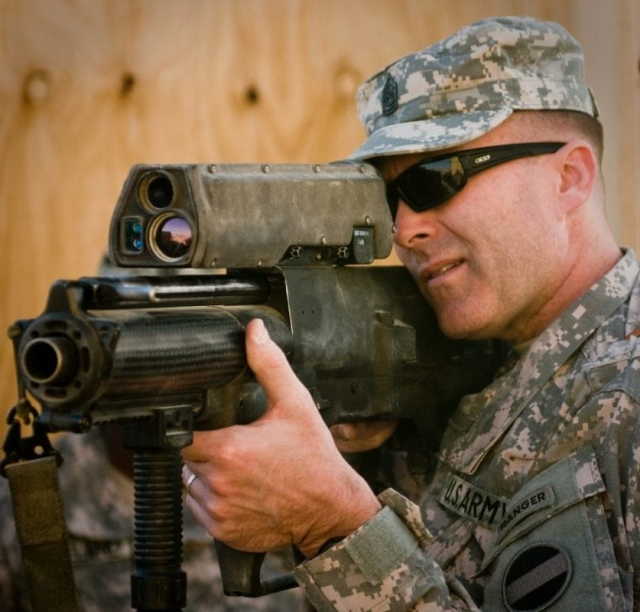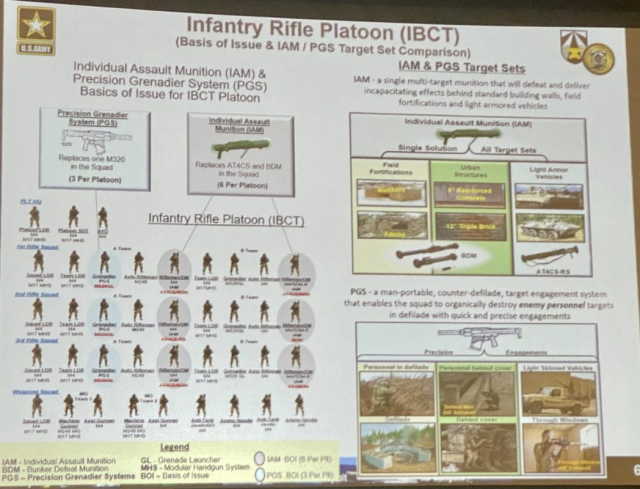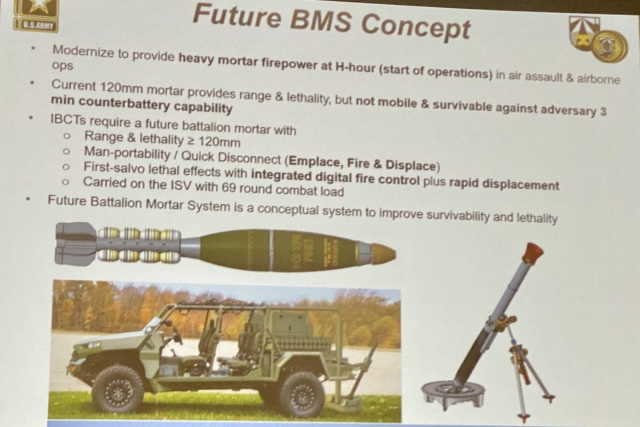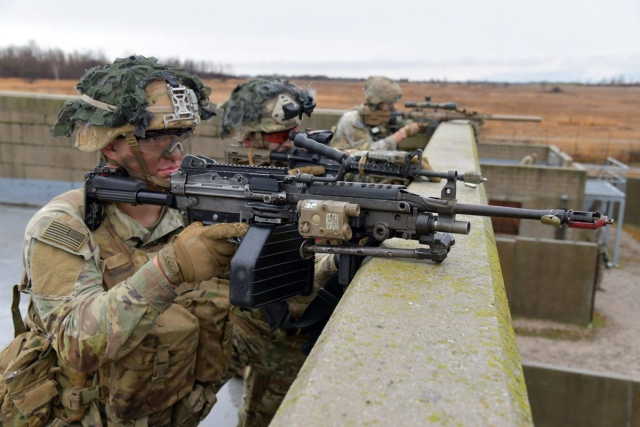The US Army Command is considering the possibility of equipping the infantry with new weapons systems, including a new type of grenade launcher (Precision Grenadier System), a medium machine gun, as well as a new mortar for airborne troops. This is evidenced by the reports read at the end of September 2022 by arms procurement officials at the Future Force Capabilities conference. The event in Austin (USA, Texas) was organized by the National Defense Industrial Association.
In accordance with this, the ability to hit targets behind shelters and the use of a medium machine gun have become two priorities of the management of the US Army soldier lethality program.
Precision Infantry System (Precision Grenadier System)
In the past, the army has already been developing a system that could effectively hit targets in trenches and in combat positions. The system, called the XM25 "Punisher" (Punisher), was the result of the creation of an individual combat weapon XM29 (Objective Individual Combat Weapon, OICW), developed in the mid-1990s as a weapon representing a combination of a 5.56mm assault rifle and a 20 mm air blasting complex, in fact, a programmable grenade launcher. The two OICW systems were not interconnected: the assault rifle turned into an XM 8 carbine, and the grenade launcher into an individual semi-automatic grenade launcher XM 25. The latter system was tested in Afghanistan, but was deemed insufficiently suitable for combat use.

XM-25 grenade launcher systemThe US Army is still interested in this opportunity, although for some time it was less of a priority, and priority was given to the development programs of the Next Generation small arms squad (Next Generation Squad Weapon).
The Center of Excellence in Tactics is currently developing requirements for a future Precision infantry system ( Precision Grenadier System, PGS ), designed to be used as a portable complex for hitting targets behind shelters with fast and accurate attacks. The PGS is a semi-automatic multi-barrel weapon system with a small trajectory and high rate of fire, with higher efficiency and accuracy compared to the previous 40 mm M320 GL grenade launcher.
On August 31, 2022, PGS management completed work with the management of the General Evaluation Commission, having received permission to develop specifications, which are expected to be published in 2024. Specifications should include all elements of a complete system, including ammunition, launcher and fire control system. It is reported that the requirements will not determine the caliber, but rather focus on hitting targets.

The US Army is also working on the introduction of so-called individual assault ammunition (IAM), designed to combat fortified positions and armored vehicles. The slide shows how PGS and IAM should be used in the militaryMedium machine gun for the US Army
Having paved the way for the adoption of new squad weapons, including ammunition, the US Army is now exploring ways to increase the firepower of infantry platoons. To do this, a "Platoon Arms and Ammunition Configuration Study" (PAAC) is being conducted, the purpose of which is to provide decision makers with information on how best to deal with the new Medium Machine gun (MMG) capability. The study examines the full range of possible combinations of fire control, weapons and ammunition that can be deployed in both amphibious and platform configurations. The PAAC study should be published by the 4th quarter of 2023, and a decision on MMG is planned for 2024.
In addition, the US Special Operations Forces Command (USSOCOM) is currently developing a program to create light medium caliber machine guns.338 Norma Mage (8.6x70 mm), which is also under the supervision of the US Marine Corps. The Army refrains from making a decision until the PAAC study is completed. Options include a new caliber and weapon, or perhaps even just a new 7.62mm x 51 or 6.8 caliber weapon in a regular case, which is used in the Next Generation Squad Weapon family.
Battalion-level mortar system
It is also reported about another new system – a modernized 81-mm mortar, which in the future is planned to be supplied to the brigade combat units of the 11th, 82nd and 101st Airborne divisions. The 81-mm mortar system, designated E81C, is designed to replace an equal number of 120-mm battalion mortars and provide American paratroopers with greater mobility and fire efficiency. The goal is to guarantee, immediately after the landing, powerful means of fire support for the units involved in the operation. Under normal conditions, such means (120 mm mortars) are ready for use only four hours after the landing of the first forces.

The 81-mm mortar system, designated E81C, is designed to replace 120-mm mortars, providing American paratroopers with greater mobility and fire efficiencyIt is assumed that 81-mm mortars can be used both in the field and mounted on Infantry Squad Vehicle-type amphibious vehicles.
According to the materials of the resource soldat-und-technik.de

